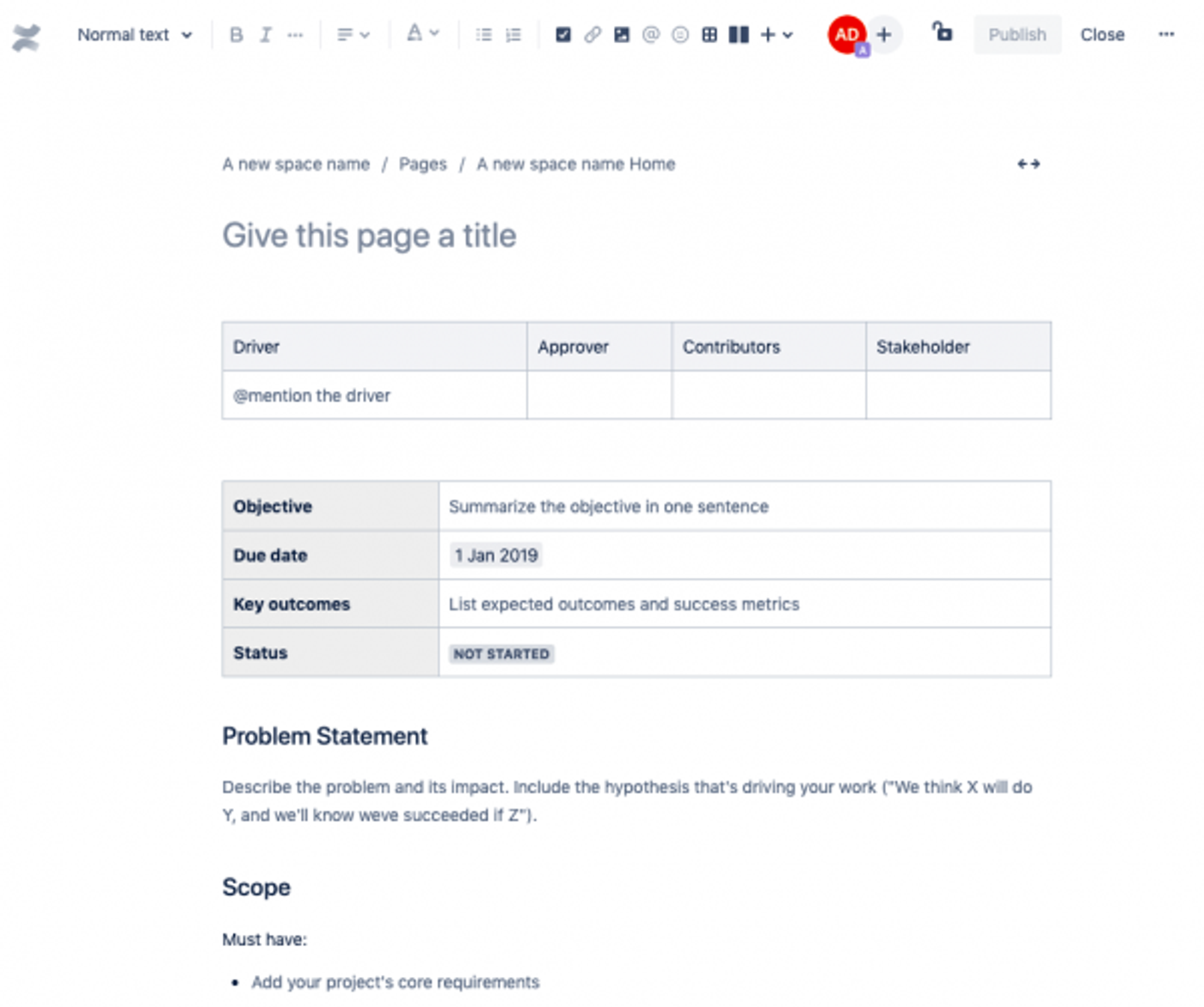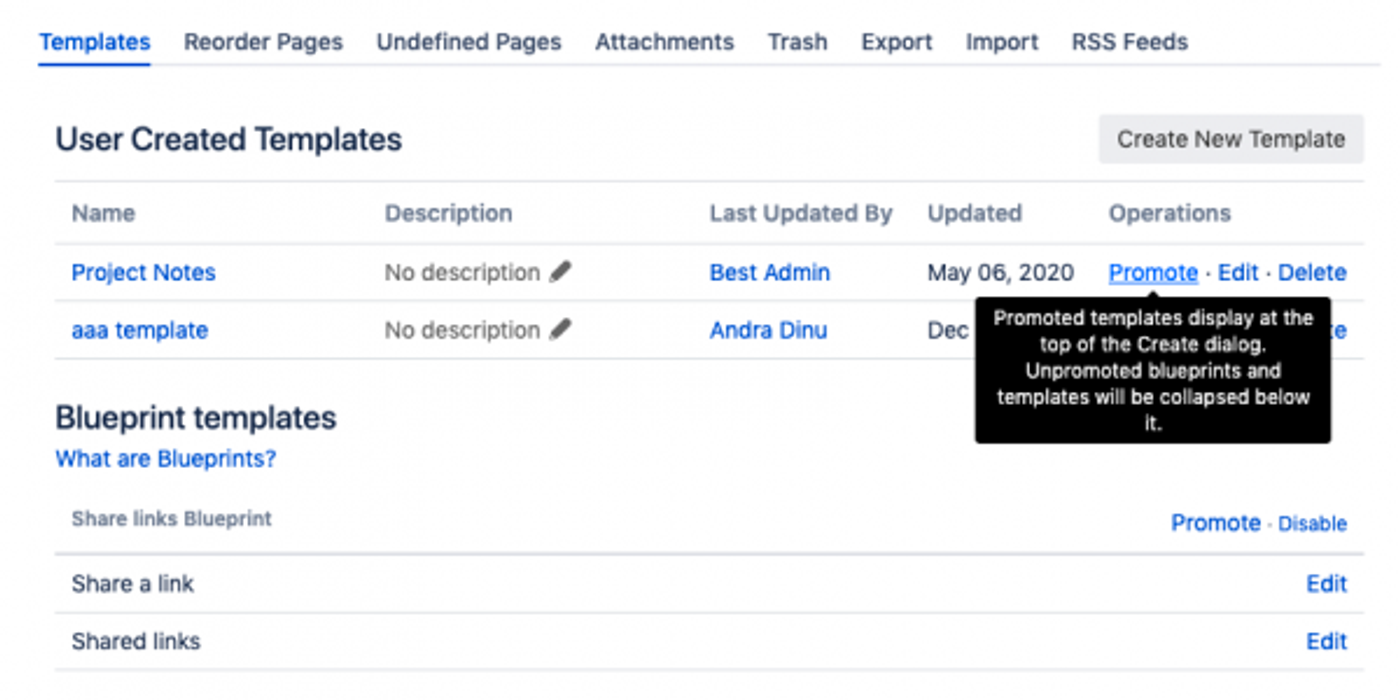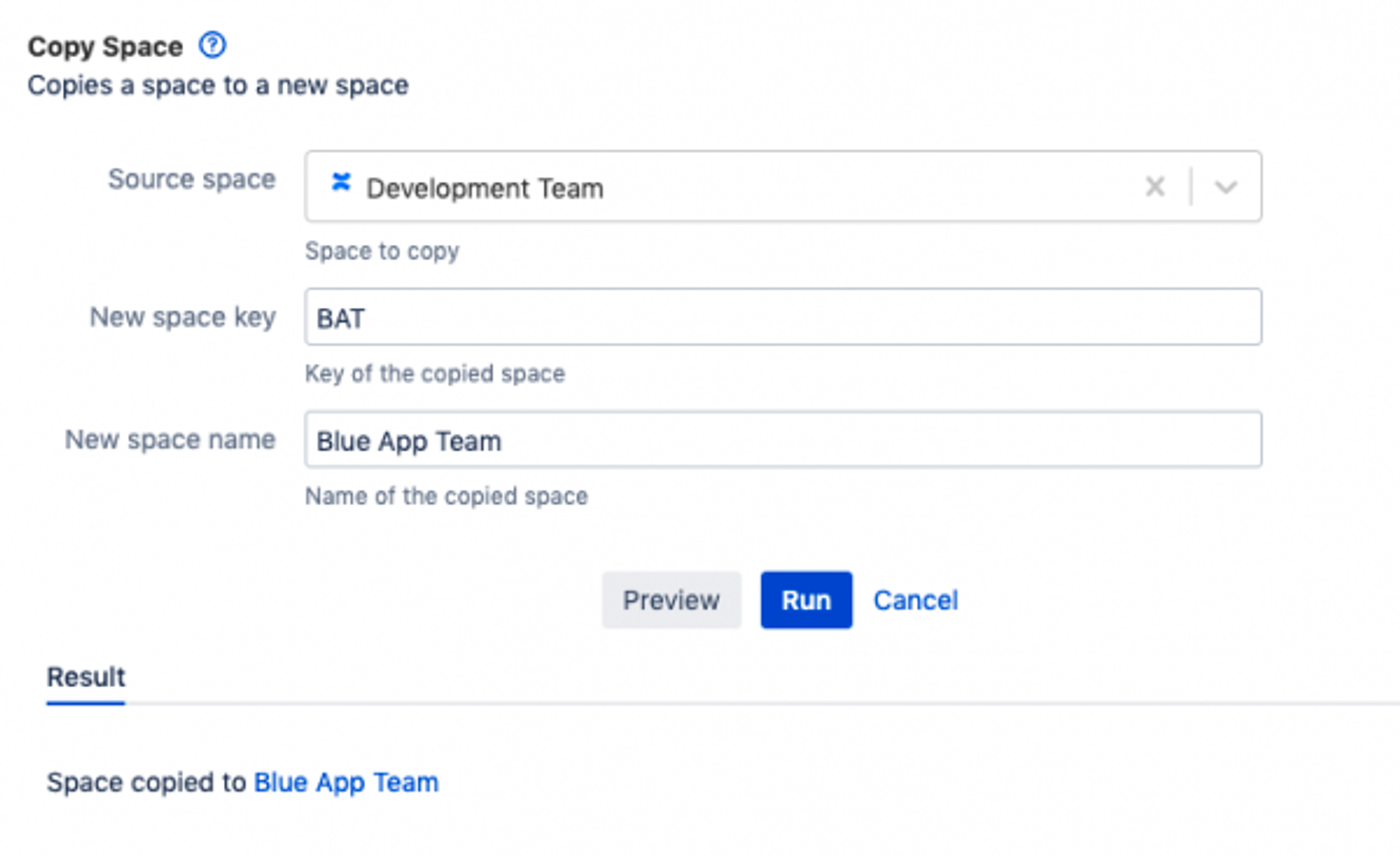
Andra Dinu
22 May 2020


Using Confluence templates and blueprints
In this post, we’ll look at a few ways to create better structure on your pages and spaces using templates and blueprints.
To help Confluence admins keep their sanity, we asked a few of our consultants to share some tips and tricks for efficient content management in Confluence.
In this post, we’ll look at a few ways to create better structure on your pages and spaces using templates and blueprints.
Confluence blueprints and templates - what are the differences?
Having pages in as many different styles, formats and locations makes it difficult for users to find and digest content. One way to help content creators keep a consistent style when adding new pages is by making good use of Confluence’s premade page templates and blueprints – Confluence pages with predefined content.
When your users add a new page, they won't have to start from scratch. Instead, they will base their new page on a template or a blueprint. Templates are simply generic pages with pre-populated content, covering most scenarios – from HR Reporting to Product Requirements.

A Confluence blueprint is a template with added functionality. Blueprint pages can offer more customisation and are automatically indexed for easy access and page overviews. When you’re using them, pages created from templates and pages created from blueprints are practically identical, which can create a bit of confusion on what the differences are exactly.
The main thing to remember is that, when adding blueprints to your instance, some development effort will be required, while template pages are faster to create and require no development effort.
Confluence page blueprint
- Title can be dynamically populated (e.g. including dates in minutes page)
- Content can be pre-populated dynamically in the page via already-included macros
- Blueprint pages are automatically indexed into a list
Confluence page template
- Title is blank
- No pre-written/designed content and no end user macros in the standard templates – but they can be added easily.
- No automatic indexing
Should I use a Confluence blueprint or a template?
Whether you’re going to use a blueprint or a template depends entirely on what your needs are – and how familiar you are with coding.
If your users have the tendency to create something from scratch every time they add a new page to a space, you can highlight specific page blueprints or template in the "Create Page" dialog - to encourage the creation of pages in a uniform style. To do this, you have to be a space admin. Go to Space Tools, choose Content Tools, then choose Promote next to the templates or blueprints you want to highlight in the Create dialog.

It’s good practice to disable the blueprints that are not needed on a space-by-space basis: users in the HR space do not need to see a Product Requirements blueprint in the Create dialog.
Customise and create bespoke templates to suit your specific needs
Going one step further, you can create your own blueprints and templates. You can start with taking the existing ones, modifying them and saving them as your own, or you can create entirely new ones from scratch. While creating or customising blueprints requires writing a plugin for each blueprint, templates can be customized by admins (globally or per space) very easily.
If you’re a ScriptRunner user, the Create Page Macro can be an even better way to encourage your users to use standardised page creation than by highlighting specific blueprints in the "Create Page" dialog. This quick solution prompts users to create new pages with a pre-specified template, in a pre-specified location, with pre-added labels, and title suffixes, all at a simple click on a button or link.

Go big – create Confluence templates for entire spaces!
Sometimes, only using page templates is not enough, and you need a solution for creating entire space templates.
Out-of-the box, Confluence allows you to select space blueprints, which have the same limitations and advantages as page blueprints. You can choose from a series of space blueprints with predetermined hierarchies of parent and child pages to reflect team processes, but as you cannot create them from scratch, customisation can be limited.
Here’s a nifty trick for creating entirely customised spaces from a template - using ScriptRunner for Confluence:
- Create your template space in Confluence exactly as you need it
- Once you have your space template nailed down, open the Copy Space built-in script. This script will copy the template space you created in its entirety - including space description, its theme, any custom content and style sheets and all content, including attachments, and comments, saved space templates and space permissions.
- Whenever you need a new space from your template, just repeat step 2 over and over again to set up spaces for similar teams.

Unlock the full power of templates in Confluence with ScriptRunner
If you haven’t tried ScriptRunner for Confluence yet, you can find out more about it on Atlassian Marketplace and start your free 30-day trial today.
